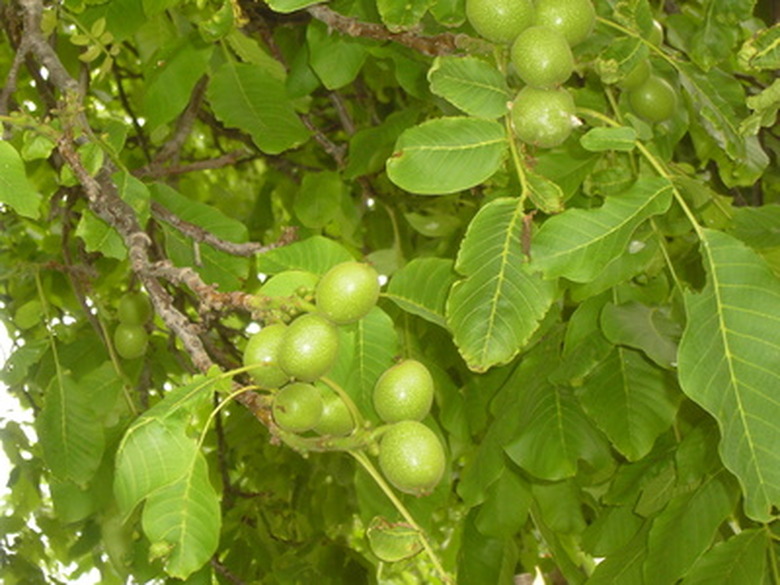Walnut Tree Fertilizer
Growing walnut trees involves good management practices that are not limited to simply adding fertilizer. For fertilizer to be beneficial, things such as site selection, soil testing, weed control and insect and disease management must be practiced as well. If even one of these components is ignored, the success of the walnut tree and its fertilization program can be reduced.
Site Selection
Walnuts prefer well-drained soils and locations in full sun. Avoid areas that are subject to frost pockets. Another consideration is how loose the soil is, not only at the surface but as far down as 6 feet. Walnut roots go deep and need room to spread. No amount of fertilizer can help if the walnut tree is planted in tightly compacted or rocky soil.
- Growing walnut trees involves good management practices that are not limited to simply adding fertilizer.
Soil Test
The soil test is the next most crucial component of growing walnut trees because it will guide your fertilization plans. A soil test can be conducted by collecting several samples of soil from the site. The soil test can reveal the nutritional makeup of your soil and any existing deficiencies. It is best to do this at least a year before planting to allow time for added fertilizer and amendments to work their way into the soil. After planting, the soil test can still help advise you of nutritional needs.
Soil pH
The test can also reveal the soil pH, which for walnut trees should be between 6.0 and 7.2. Applications of some types of fertilizers can lower the pH and impact microbial activity in the soil. This influences the natural breakdown of nitrogen and potassium, depriving the tree of needed nutrients.
- The soil test is the next most crucial component of growing walnut trees because it will guide your fertilization plans.
Planting
When planting your walnut tree it is imperative that you not add fertilizer to the planting hole. This type of direct contact with fertilizer is too strong for the young tree and can cause fertilizer burn and perhaps cause the tree to die. Because you tested the soil and amended it a year before planting, no fertilizer should be applied during the first year of growth.
Later Applications
Determining the amount of fertilizer to use is a matter of measuring the tree trunk at 5 inches above ground level. For young trees with diameters under about 20 inches, 1 lb. of 10-10-10 fertilizer should be broadcast under the canopy. For trees with larger diameters, use 2 lbs. of fertilizer. The need for fertilizer can also be assessed by the tree's growth rate. Trees which are producing nuts should show terminal growth of 4 to 8 inches annually. Younger trees that are not yet producing should double this growth rate.
- When planting your walnut tree it is imperative that you not add fertilizer to the planting hole.
- Because you tested the soil and amended it a year before planting, no fertilizer should be applied during the first year of growth.
